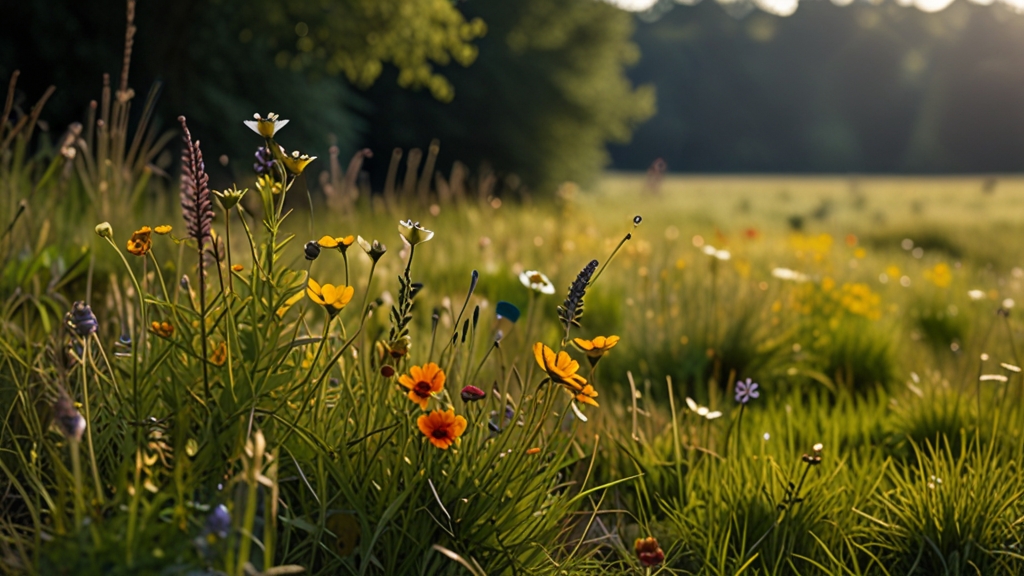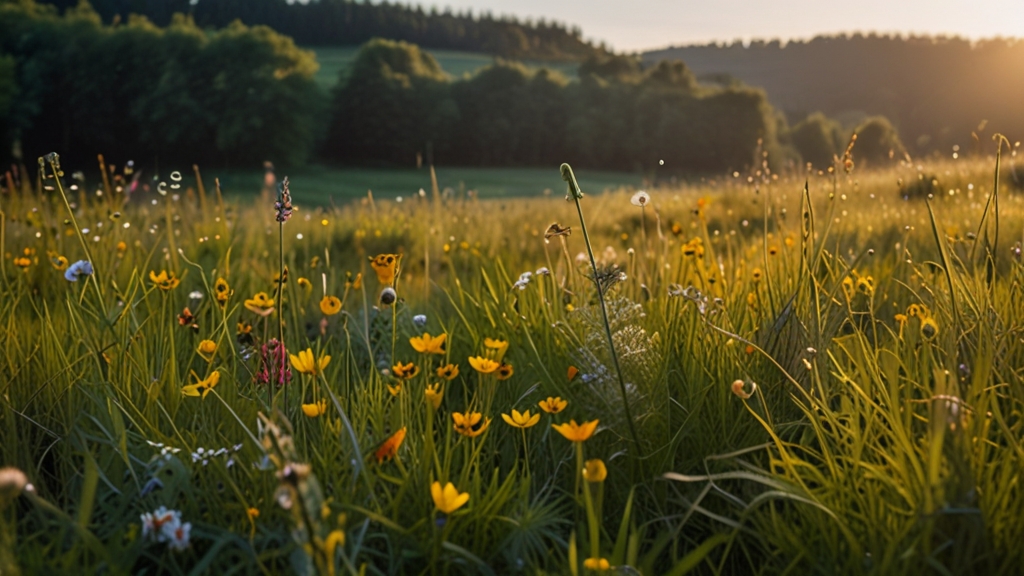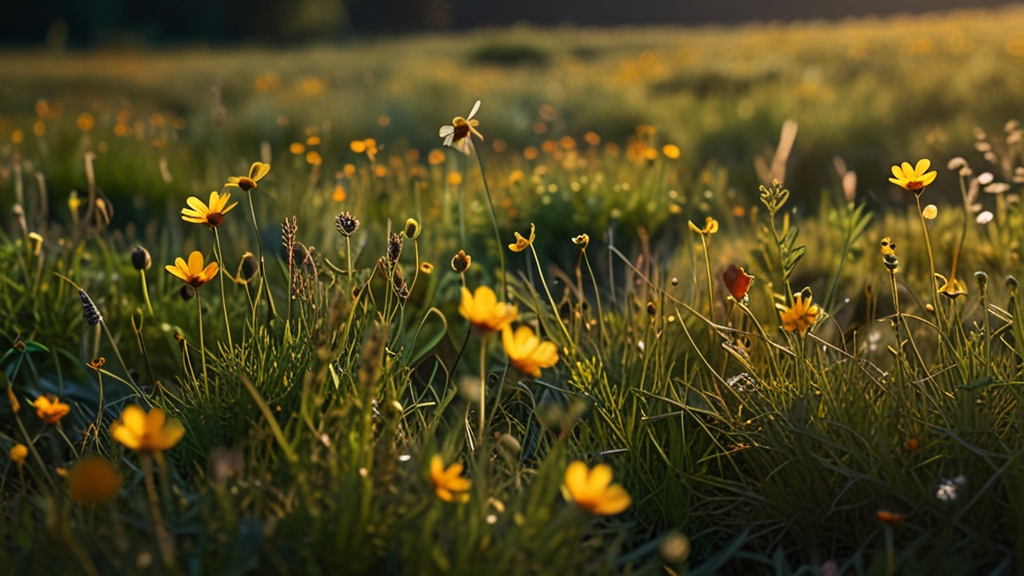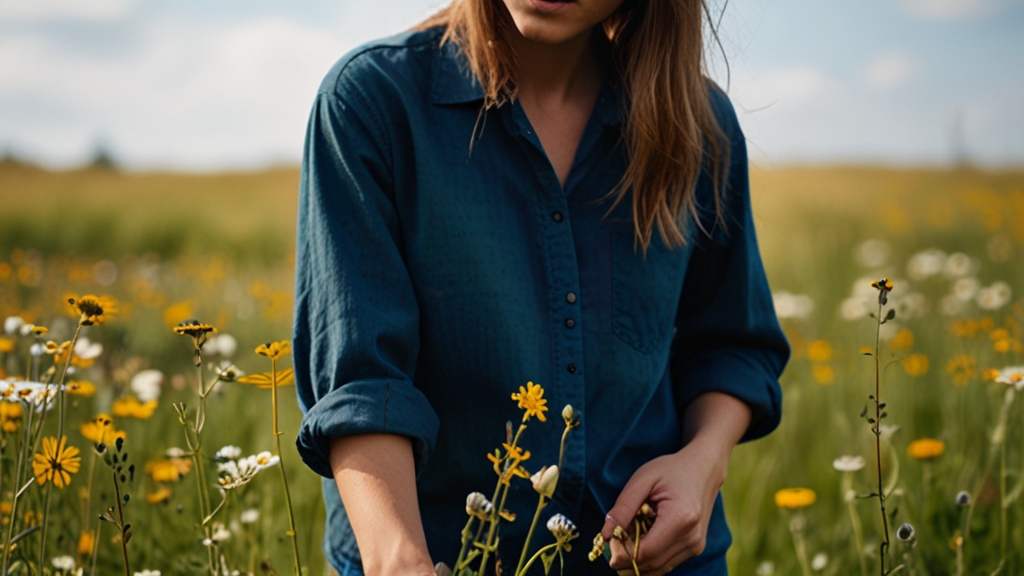How to Solve mix point
Who knew that wildflower meadows were such powerhouses? Not only better for wildlife, farm animals, and farmers but also incredible carbon stores!
Follow Euella as she visits Herefordshire and meets Billy, Rory, Fraser and James, Kath & Sanghadeva – the nature heroes bringing our UK meadows back to life!
This is WWF UK Restoration Series – stories to empower and inspire from the people who are restoring British meadows, rivers, uplands and oceans to help bring our world back to life. In this episode, we’re going to be doing a deep dive into wildflower meadows and the solutions that they hold. I don’t know about you, but I am keen to know about anything that might be good news right now! When I travel around the country, everything looks really green, so it’s like everything’s OK, but actually, the UK is one of the most nature-depleted countries in the world.
Basically, nature is in freefall here. I’m really interested in finding out the value of wildflower meadows and the solutions they hold. So, here’s the heavy bit: We only have 3% of our wildflower meadows left. What happened? Farming, for the past 50 years, has been very much chemical-based, reliant on fossil fuels, fertilisers, pesticides, diesel.
Conventional farming practises, as they are, aren’t great in terms of biodiversity. Farming alongside nature really is the ultimate goal we should all be aiming for. We’re facing a combined biodiversity crisis and a climate crisis. We feel that grasslands are part of the answer. We’re trying to bring them back to life.
There’s farms across the country that are really changing the way they operate. That sounds sick! I’m going to find some of these game changers in Herefordshire. Most of our farm animals only have one or two types of grass to eat. It’s a bit like me just eating pasta or something. Not very healthy.
Wildflower meadows are so different, full of a rich mix of grasses and flowers, which is really good for the animals. James Hawkins and his family have been restoring meadows at Warren Farm for 20 years. His animals graze on a banquet of plants, giving them a seriously healthy diet. And they have some amazing other benefits, too.
These are red clover, particularly fantastic for the cattle. For protein content, bird’s foot trefoil, this beautiful little one here. And this is a natural wormer. And this again is another medicinal plant within the meadow, plantain, high in natural mineral content. When you look at the condition of the cattle, they’ve got a lovely sheen to them.
They’re looking very, very healthy. The meadow we’re in is a much wider habitat for various insects, birds to thrive in. There’s a noise, there’s a life to the meadows. So, as a farmer, you can see the actual benefit that you’re doing, not only just with the cattle, with the meat, but also the environment for the whole lot – it’s fantastic! That’s so good! Wildlife keeps the land alive and helps produce the food we eat, I
t’s got like a little point… garden bumblebee! It’s a very long-tongued species. I love that for you, hun! Love that! -Doing great, sweetie! Many plants can’t reproduce without bees and lots of other insects do the same job. Wildflower meadows are humming with insects. A vast majority of our foods relies on pollination by insects. If we don’t have the insects, we’re going to find it pretty hard to get food for ourselves.
So we’ve got to be a lot more compassionate for those little pollinators. There are other animals involved in making meadows too. Grazing animals make them more diverse and healthy. I met an amazing lady who has a large family that she takes wherever their nibbly little teeth are needed. I am a shepherd.
“Hi girls!” OK, girl! I feel like they could run you over if they wanted to. That is a door, so now we have to make the pen. We’re learning something today, y’all! I graze over 10 different properties. I’m constantly moving my sheep and we leave a fair amount of grass. If we do that, the roots are longer, the grass will grow faster, and when you have a better root mass, you have better carbon sequestration.
Yes! Go on, go on. Anybody else coming? Come on, Zelika! Kath is taking her sheep off to another Meadow to deliver their eating services. Wow, that was an experience! So, wildflower meadows are better for wildlife and farm animals and farmers, and for storing carbon as well? Why are they so good at storing carbon? Because they create very good soil.
I’m going to meet someone who is well into his soil, a new generation British farmer. On this farm, we are literally seeing things change in front of our eyes year by year, and we’re farming in a more profitable way, a more resilient way. We’re seeing the biodiversity in our pastures spring back to life.
We’re trying to do away with our reliance on fossil fuels. We’re using what’s free: sunlight, rain, nitrogen in the atmosphere, and we’re basically trying to harness that alongside nature. Soil is our main asset. All of what we’re doing focuses on improving the health of our soil. The soil from a more conventional farming system is quite blocky, very dense.
In terms of biological activity, near enough dead. Can’t imagine much water getting through it… No, that’s just gonna flow straight off, cause flooding. From our pastures, the soil is full of life, drawing in a hell of a lot of carbon into the soil, nice and crummy. There’s lots of air.
-Looks a bit like a sponge cake, doesn’t it? So, the way that you’re farming is actually preventing flooding? Yeah, definitely. Now, I’m going to take you to a very special place where a monk has restored wildflower meadows at at Adhisthana Buddhist Centre, purely for the wellbeing of all. I just come down here in the evenings and it’s just transporting.
It’s a bit like the snow of your mind – all the sort of distracted thoughts, everything just settles down. I didn’t have any sort of philosophy in mind or theory about why I was going to create it. You’re like me, I’m here for the vibes. You’re here for the vibes? -Yeah, I’m here for the vibes! Yeah, yeah, yeah, yeah, yeah, yeah, yeah.
There’s been so many people and different animals and, you know, plants interacting with this meadow. It does feel like community effort, but not just community in terms of people. Feel really connected and grounded. It’s very subtle, isn’t it? Beauty of the natural world is imperceptively transformative.
There is something about being out in these, like, amazing spaces and meeting amazing people that just kind of lift you up. Feeling the the lands come alive again, you can kind of feel your purpose, see your purpose. A lot of people my age feel a lot of kind of uncertainty about the future around the climate crisis.
I’m doing as much as I can with the land that we are lucky enough to farm on. Makes you feel good about what you’re doing. You know that you are making a difference. I have grandchildren, and I worry about what their life is going to be like. And if I can make meadows which help pollinators and all sorts of other wildlife, then I have to do my part.
Regenerative farming very much can be the solution. This could be done anywhere in this country or in the world, and ultimately is the future of food production on this planet. So, if we bring back our meadows like these awesome people are doing, just imagine all the benefits we’ll get and the problems we’ll solve.
In the next episode, we’re going for a paddle in Norfolk to find out how we can bring our rivers back to life.










